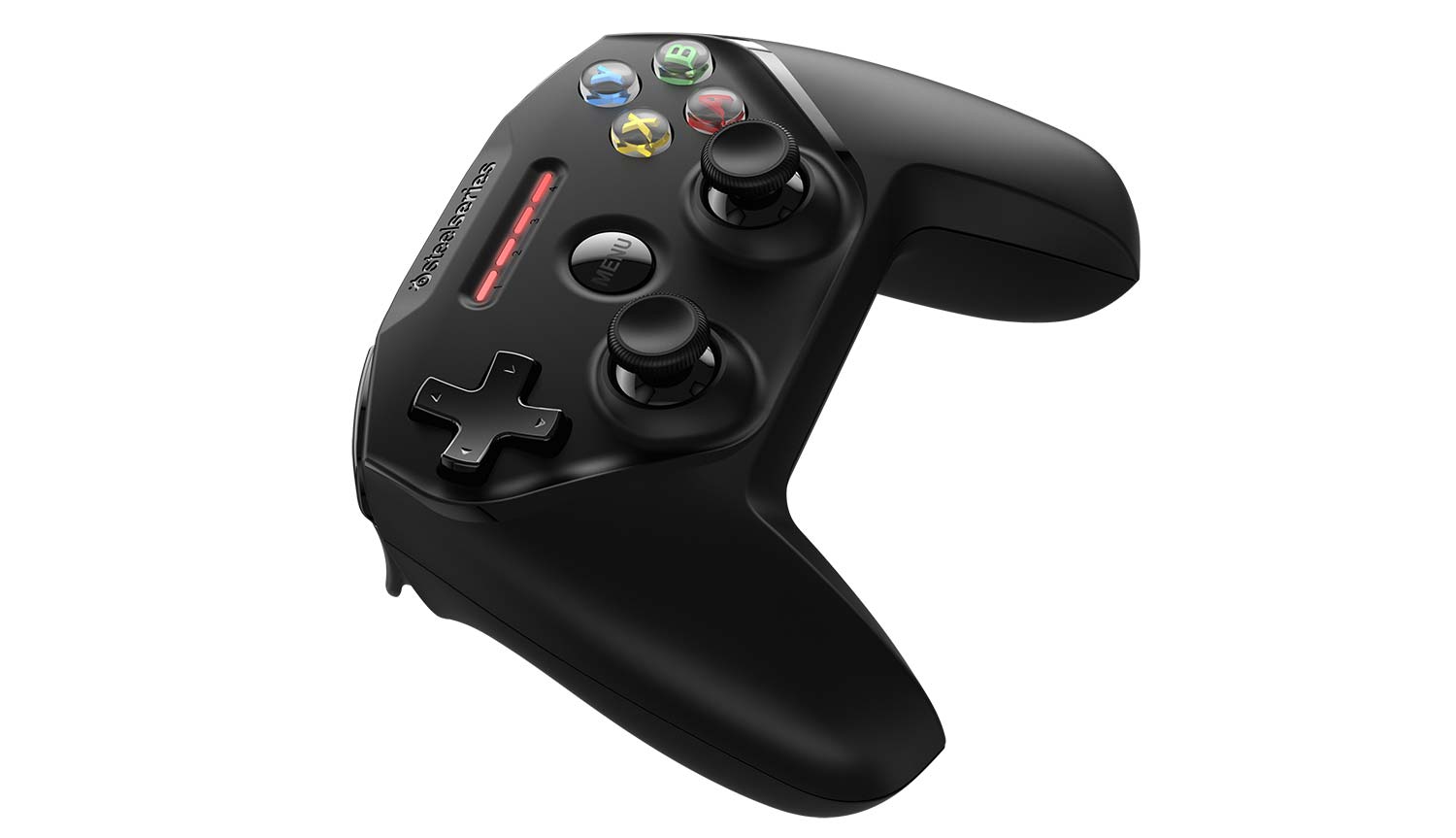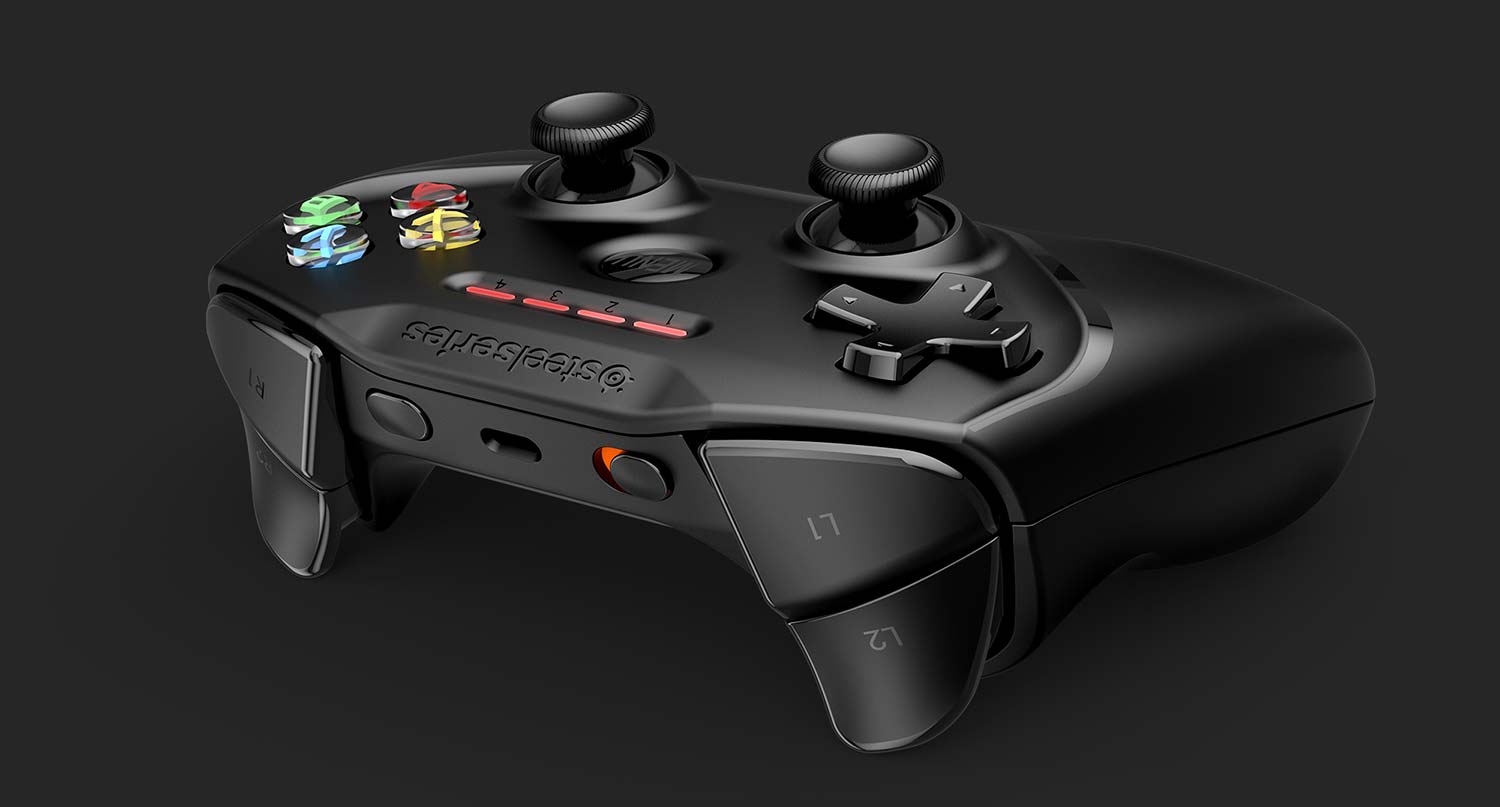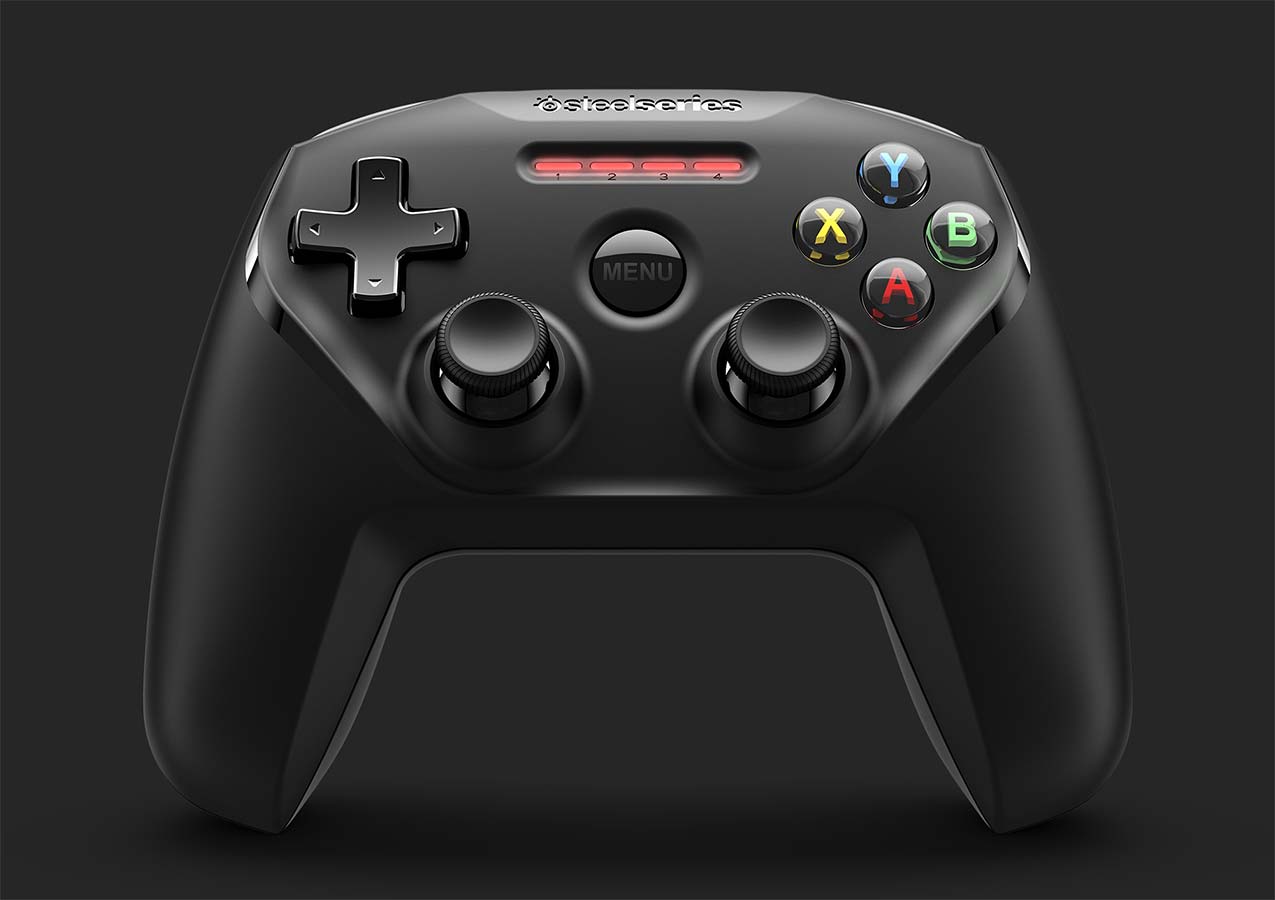Tom's Guide Verdict
The Nimbus looks great, feels great and plays games much better than a standard Apple TV remote.
Pros
- +
Comfortable design
- +
Great in-game performance
- +
Simple setup
- +
Reasonable price
Cons
- -
Feels too light
- -
App doesn't add much
Why you can trust Tom's Guide
Like the Amazon Fire TV and the Nvidia Shield TV before it, the redesigned Apple TV took gaming from a niche set-top-box distraction to a sizable priority. The only problem was that while the Android-based systems worked with any Bluetooth controller, Apple systems have always been a bit more exclusive.
Enter the Steelseries Nimbus ($50): a robust controller for console-style games on any modern Apple device, from Mac computers to the iPhone to the iPad to the Apple TV. The Nimbus works beautifully, doesn't cost too much and even has Apple's seal of approval as an official peripheral. While you could (and should) ask whether your selection of Apple TV games really merits its own controller, this is the one to get if the answer is "yes."
Design
I don't know when the bill was signed into law that every mobile controller must look more or less like the Xbox 360's controller, but it's not a bad precedent, and the Nimbus does little to break it. At 5.9 x 4.3 x 2.5 inches, it's just a bit larger than an Xbox One controller (4.9 x 4.0 x 1.5 inches) and generally feels just as comfortable. However, it's not quite as heavy, so players used to having a little more heft will have to adapt to a lighter touch.

The Nimbus sports a D-pad, two analog sticks and nine buttons: a Menu button in the center, four shoulder buttons and four face buttons. (There's also a Hold button to prevent accidental button clicks while the device is not in use, and a Bluetooth pairing button, but they have no effect in-game.) They all feel comfortable and are admirably sensitive to varying levels of applied pressure.
MORE: Best Streaming Players: Chromecast, Roku, Apple TV & More
I appreciate that the Nimbus keeps things simple, but it would have been nice to have a button that brings you back to the device's home screen instantly. Every Android controller I can think of features a button like that, as do the Xbox One and PS4 controllers.
Features
The Nimbus doesn't have much in the way of extra features, and that's probably a good thing. As with any Bluetooth accessory, all you have to do to get it up and running is press the Bluetooth button on the controller, then pair it on your device of choice. It's a foolproof process, and I connected it to a variety of Apple devices without issue.

Unlike some other mobile controllers, the Nimbus runs on a rechargeable battery rather than replaceable AAs. SteelSeries claims that the Nimbus boasts more than 40 hours of battery life, and while we didn't have enough time to test that claim fully, it seems like a reasonable estimate based on my experience with it. On the flip side, however, it also takes a long time to charge, and requires a Lightning cable rather than a standard micro USB. Since the Apple TV has no USB port, you'll have to either plug it into the wall or a nearby computer to charge it, and that can be a bit of a pain.
The app is not available on the Apple TV, which is too bad since the Apple TV is the system that benefits the most from having a controller.
If you hook the Nimbus up to an iPad or iPhone, there's a mobile app that goes along with it, although the app is quite conservative by gaming-software standards. You can use the mobile app to upgrade the Nimbus' firmware, watch a series of tutorials to learn how to use the device or use it to keep track of which iOS games are compatible with controllers.
However, the app is not available on the Apple TV. This is too bad, since among Macs, iPhones, iPads and Apple TVs, the Apple TV is the system that benefits the most from having a controller. Having to update firmware via a mobile app may eventually work against the controller, too, especially if consumers use it exclusively with an Apple TV and never hook it up to a mobile device.
Performance
The Nimbus is a thing of beauty when it comes to playing games, even though I would have liked the peripheral to be a little heavier. The buttons are well-spaced, the analog sticks have a nice bit of resistance to them and the shoulder buttons feel sufficiently pliable.

I tried out the Nimbus with a variety of Apple TV games, including Disney Infinity 3.0, Transistor and the woefully underplayed Steven Universe: Attack the Light. (I tried using the Nimbus with Beat Sports, Harmonix's rhythm/sports hybrid, which is one of Apple TV's few exclusive titles, but it requires a standard remote.)
Whether I was piloting an X-Wing through the Death Star trench, exploring a dystopian cyberpunk city or commanding the Crystal Gems to do battle with inorganic scorpions, the controller felt responsive and intuitive. If you've played with any major controller in the last 20 years or so, you should have no trouble getting comfortable with the Nimbus.
My only major complaint is that, presumably just to distance itself a bit from the Xbox 360 controller on which it's based, the A button is red and the B button is green. Since A is usually used to confirm and B to cancel, it was a little confusing to mentally readjust.
MORE: Best Games of The Year
I also used the controller to navigate the Apple TV menus and other apps, such as Netflix. As a gamer, I was much more comfortable with the Nimbus here than with the inconsistent Apple TV remote. For people who cut their teeth using PS3s and Xbox 360s to access Netflix and Hulu, the Nimbus might be worth the price of admission for ease of use alone.
Bottom Line
The Nimbus is a simple device with a simple goal: Provide a controller for the Apple TV that's just as good as what console and Android gamers have. The absolute glut on the market of cheap, second-rate console and Android controllers should demonstrate just how easy it is to mess this up. Fortunately, the Nimbus looks great, feels great and plays games just as it should.
While there's a reasonable discussion to be had as to whether or not you really need a Nimbus (Apple requires that every game be compatible with the standard Apple TV remote), it's a wise investment if you intend to use the Apple TV for console-style-titles games rather than casual time sinks.
Marshall Honorof is a senior editor for Tom's Guide, overseeing the site's coverage of gaming hardware and software. He comes from a science writing background, having studied paleomammalogy, biological anthropology, and the history of science and technology. After hours, you can find him practicing taekwondo or doing deep dives on classic sci-fi.

